Copper plant or Copperleaf is a popular shrub commonly planted in tropical gardens. The genus Acalypha includes 430 species of weedy herbs and shrubs that grow natively in the South Pacific, and tropical Americas. Some perennials and annuals grow in other regions of Central and South Florida as well. Also known as Jacob’s coat or as match-me-if-you-can, the Copper Plant thrives in Fiji and the Pacific Islands.
If you are considering a new addition to your garden or houseplant collection, look no further than the Copper Plant. Although it needs a bit of pampering, it is not a difficult plant to care for.
Most people who grow copper plants describe them as being low-maintenance. These vibrant shrubs are sought after by gardeners around the world for their stunning, coppery-red foliage. Surprisingly, there are many varieties of Acalypha wilkesiana with different foliages that can be white, purple, pink, or green. They can blend beautifully in your backyard or inside your home where they’ll add a splash of color.
If you live in Hardiness Zones 9 to 11 you should have no problem planting the Copperleaf outdoors in your garden. The rest of us can enjoy it as an annual addition or as a houseplant in a chic container. Because it grows quickly, you can have it as a perennial, or just bring it inside during winter when temperatures drop.
Quick Facts
| Fact | Details |
|---|---|
| Scientific Name | Acalypha wilkesiana |
| Common Names | Copper Plant, Copperleaf, Jacob’s coat, Match-me-if-you-can |
| Origin | South Pacific, Tropical Americas |
| Size | Up to 6 to 10 feet high and 4 to 8 feet wide in warm climates |
| Light Preference | Direct sunlight or partial shade in hot, dry climates |
| Temperature Preference | Above 60 degrees Fahrenheit (15°C) |
| Soil Preference | Organically rich soil mixed with a good amount of compost |
| Watering Needs | Regular watering with soil kept constantly moist |
| Potential Pests | Spider mites and mealybugs |
| Propagation | Through stem tip cuttings |
| Toxicity | Not toxic to dogs and cats, but can cause skin rash. Large quantities may be toxic if ingested, causing nausea, vomiting, diarrhea. |
| Medicinal Uses | Treatment of fungal skin diseases, gastrointestinal disorders, diabetes, diarrhea, and hypertension |
About Copper Plants
- The name of the genus ‘Acalypha’ comes from the Ancient Greek word akalúphē which means nettle, due to the nettle-like aspect of the leaves. Wilkesiana is a reference to Amiral Charles Wilkes, a 19th-century American explorer and naval officer in the South Pacific.
- To encourage growth, and a fuller shape and size, stems can be pinched down. Acalypha wilkesiana serves as a beautiful accent around tall trees, along a blank wall, by the entry, or in a hanging basket on the porch.
- Copper plants look very good paired with chenille plants. They can accentuate any interior design with their intense colors and features.
- Acalypha wilkesiana is sometimes harvested for its medicinal uses. It can be used to treat fungal skin diseases such as mycoses, Pityriasis Versicolor, Candida intertrigo, and Tinea. Data shows that it might be effective in treating gastrointestinal disorders, diabetes, diarrhea, and hypertension as well.
- The Copper Plant is not toxic to dogs and cats, according to ASPCA, although it might cause a skin rash. If ingested in large quantities, it may be toxic. For children, ingestion may cause nausea, vomiting, and diarrhea. Contact with the sap can cause severe dermatitis.
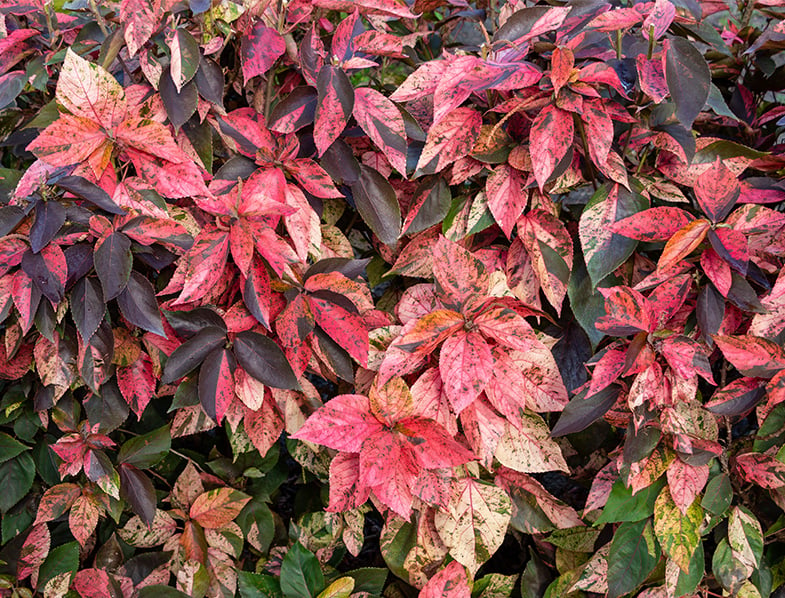
Copper Plant Features: An Overview
- A copper plant has an oval-shaped heart. Some varieties can grow up to 6 to 10 feet (1.8-3 m) and 4 to 8 feet (1.2-2.4 m) wide if sufficient space and proper growth conditions are provided. In warm climates, copper plants can be grown year-round.
- The popular Tricolor Copperleaf Plant is a fast-growing perennial that can reach 3 to 5 feet tall and 1 to 2 feet wide. The plant develops the most intense rusty colors when exposed to full sun.
- Although the Copper plant flowers, the tiny, spiky flowers pale in comparison to the beauty of its striking, brightly-colored leaves.
- The Copper plant has separate male and female flowers on the same plant. The male spikes are long and hanging, while the female spikes are shorter and smaller.
- It bears fruit that is small, capsuled with three pods containing a lot of tiny, hard seeds.
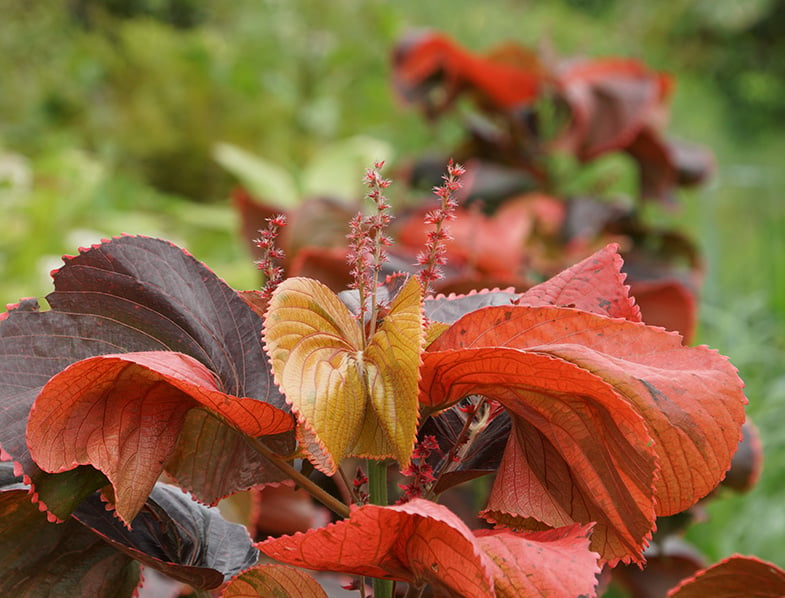
Growing Copper Plant
The most important aspect of growing Copper Plants is the location. Acalypha wilkesiana prefers direct sunlight or partial shade if you live in a hot, dry climate. When choosing where to place it in your garden, keep in mind that it must be in a location always sheltered from the wind.
This plant also thrives indoors in front of windows and areas with maximum sunlight. The ideal growing temperature should be above 60 degrees Fahrenheit (15° C). If you plan on moving the plant outdoors, wait until after the last frost. In cool climates, also check the nighttime temperatures.
Because copper plants are fast-growing, you will have a big shrub taking over your garden before you know it. It’s a good idea to prune it by half every spring to reduce its size and also to encourage the growth of new stems and leaves. Take care not to pinch off growing tips, as the plant branches out naturally.
- House Plant
- We offer WINTER SHIPPING INSURANCE for use during colder months. If temperatures are consistently 44F or below, we strongly advise Winter Shipping Insurance to be ordered along with with your plants. Included are a heat pack, insulated wrap for your plants and a money back guarantee for your plants if they arrive dead due to cold weather.
Last update on 2024-10-02 / Affiliate links / Images from Amazon Product Advertising API
Acalypha wilkesiana is vulnerable to many kinds of pests, especially spider mites and mealybugs. If you notice that the leaves become pale and sticky, you probably have some mites to deal with. When mealybugs attack the plant, it will become more susceptible to fungal infections and growth retardation.
Rising the humidity levels during winter can help prevent spider mites that love dry conditions. A humidifier can be a lifesaver for houseplants. To protect the plant, carefully remove all damaged and discolored leaves and apply a malathion solution.
If the new leaves are growing green or colorless, your Copper Plant might not be getting enough light. On the other hand, if the plant becomes too large, fertilize less often. You can fertilize spring through fall every two weeks with a balanced water-soluble fertilizer. Expect a slower growth rate during winter, so stop fertilizing till spring and water sparingly.
Planting Copper Plant
This houseplant grows best in organically rich soil mixed with a good amount of compost. Copper Plants are heavy feeders and they grow fast, so you will obtain the best results by planting them in good soil from the start. Each plant needs a 3-foot (1 m) area to grow, so make sure you give it plenty of room to fill into. Always apply a generous amount of water after planting.
Copper plants grow quite well in a container if you provide a pot twice the size of the root ball. When the roots fill the pot and you see them coming out through the drainage holes, it’s time to repot your Copperleaf. The best time to repot is in spring. Before transplanting, water the plant so you can lift it off. Dig a new hole and place the root ball inside. Cover it with soil and add some compost around it.
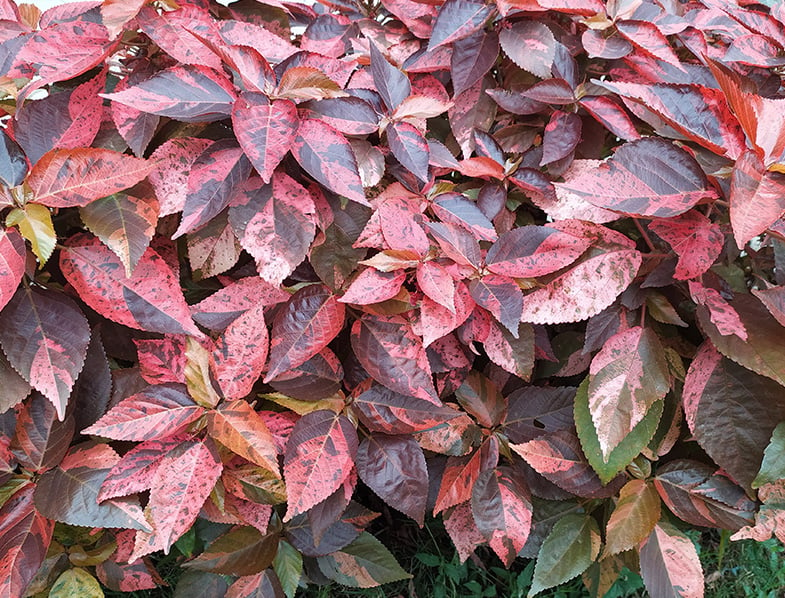
Watering Copper Plant
Copper plants love water, so their soil must be constantly moist. If you live in a dry region, misting your plant will support its preference towards high humidity levels. Regular watering is a must during dry weather conditions to prevent the roots from withering. On the other hand, too much water can cause the plant to wilt and the root system to rot, so don’t overwater it.
If planted in a pot, make sure there is a drainage hole. After watering, empty the tray. During winter, a copper plant doesn’t need so much watering. However, make sure it does not dry out or the leaves might start falling off. In cold climates, the air might get too dry. You can use a room humidifier or a pebble tray to increase humidity levels.
Propagating Copper Plant
The best way to propagate copper plants is through stem tip cutting. Start by cutting a healthy (3-3-4 inches (8-10 cm) stem at a 45 degrees angle at its base. Next, remove any excess leaves from the cuttings. Prepare a potting mix for your plant of 60% normal garden soil, 20% vermicompost or organic compost, and 20% fine sand. Mix it well inside a large bowl with your hands. Fill up a growing bag or a pot with the potting mix.
Take your cutting and dip it into rooting powder and then make a hole in the center of the pot with your finger as low as you can reach. Place the cutting inside the holes and water it generously. Place it in a location with partial shade at a constant 75°F (24°C). After approximately 45 days, your new Copper Plant should be ready for transplanting to a new pot.
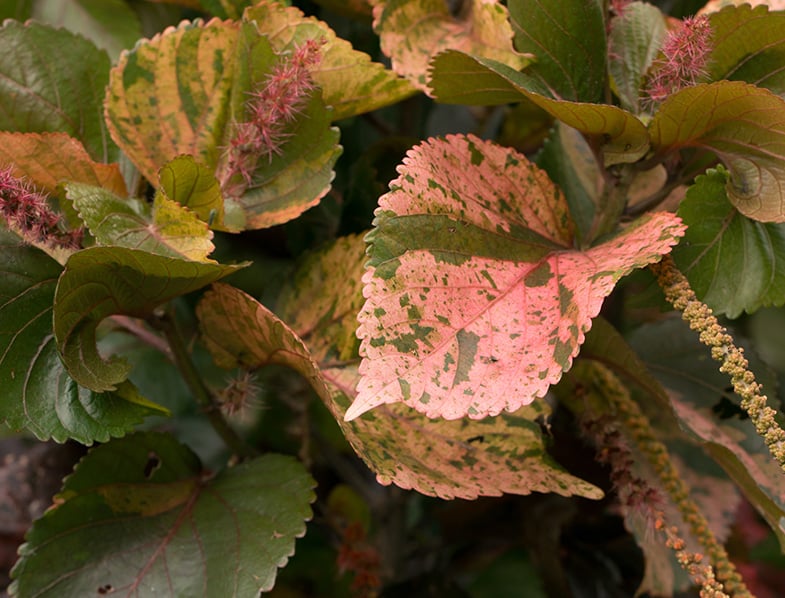
In Conclusion
Copper Plants are perennial and annual shrubs commonly found in tropical gardens in the South Pacific and tropical Americas. If you are looking to add a new member to your plant family, Acalypha wilkesiana might be an excellent choice.
Besides being low-maintenance, this stunning shrub can add a splash of color to any garden or interior. You would be surprised to know that there are many varieties to choose from, including some that have purple, pink, white, or green foliage.
When growing a Copper Plant, there are a few things you should keep in mind. The most important aspect of growing Acalypha wilkesiana is the location. Make sure you choose a sunny location or light partial shade if you live in a hot, dry, climate.
Although it can tolerate dry conditions, this plant loves water and humidity. Try to keep the soil moist at all times, and during winter when the air gets too dry mist or use a room humidifier. The temperature should never drop below 60 degrees Fahrenheit (15° C). Because Copper Plants are fast-growing, you will have a beautiful, vibrant shrub in no time!
Copper Plant FAQS
What is a copper plant?
A copper plant, scientifically known as Acalypha wilkesiana, is a vibrant, low-maintenance shrub that is known for its distinctive coppery-red foliage. It is a popular choice for tropical gardens and can be grown indoors in cooler climates.
What plants have copper in them?
All plants require trace amounts of copper to grow, but it’s usually absorbed from the soil and isn’t present in large quantities. The copper plant, however, got its name due to the color of its foliage, not its copper content.
How do you grow copper plants?
Copper plants prefer direct sunlight or partial shade, especially in hot, dry climates. They should be sheltered from the wind and require organically rich soil mixed with a good amount of compost. Because they are fast-growing, regular pruning is necessary. They can also be propagated through stem tip cuttings.
How much sun does a copper plant need?
Copper plants prefer direct sunlight or partial shade, especially if you live in a hot, dry climate. They thrive indoors in areas with maximum sunlight.
How much water does a copper plant need?
Copper plants need regular watering, with soil kept constantly moist. However, overwatering can lead to wilting and root system rot, so it’s essential not to overdo it. If you’re growing a copper plant in a pot, ensure there is a drainage hole to avoid waterlogging.
What are the benefits of copper plants?
Apart from their stunning visual appeal with vibrant foliage, copper plants have certain medicinal uses. They have been used to treat fungal skin diseases, gastrointestinal disorders, diabetes, diarrhea, and hypertension. However, more research is needed to fully confirm these benefits.

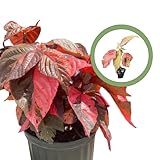
1 Comment
Does the copperhead go into shock after planting